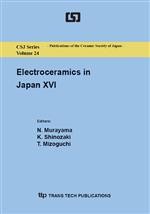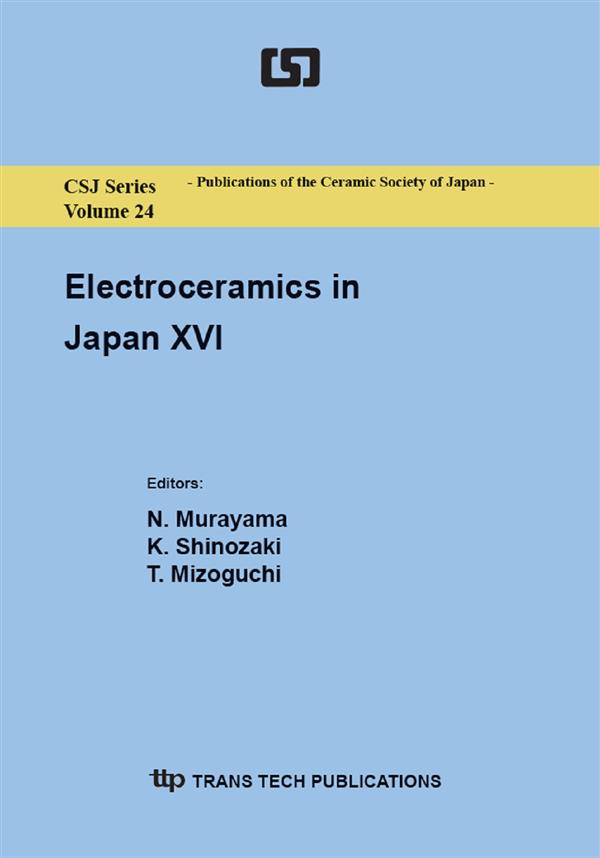Engineering Research
Materials Science
Engineering Series
Electroceramics in Japan XVI
Description:
This special collection brings together the latest developments in the science and technology of electroceramics. It focuses upon contributing to the exchange of Electroceramics know-how; both scientific and industrial. The major topics covered by this special collection includes dielectric and ferroelectric ceramics, lead-free ferroelectric ceramics, energy related ceramics, thin film and nanocrystal, semiconductor, magnetic, optical, and sensor ceramics. All papers collected were reviewed.
Purchase this book:
Info:
Review from Ringgold Inc., ProtoView:
Some 150 researchers, engineers, and students discussed and exchanged information concerning recent developments in the science and technology of electroceramics. The 51 papers comprising the proceedings cover dielectric, piezoelectric, and ferroelectric ceramics; lead-free piezoelectric ceramics; energy related ceramics; thin film and nanocrystalline ceramics; and semiconductor, magnetic, optical, and sensor ceramics. Among specific topics are the microstructure control of porous barium titanate ceramics and their sensor properties, preparing bismuth-based perovskite oxides and their electric properties, preparing and characterizing mesoporous silica and lithium-ion-conductive halocomplex salt composite, and fabricating nanostructured zinc oxide films on plastic substrates by the pyrolysis method and applying them to dye-sensitized solar cells.

